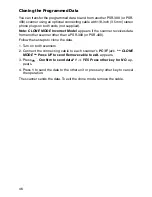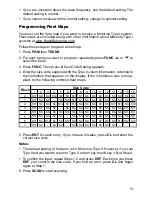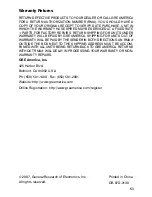
48
In the past, groups that transmit frequently, such as police departments, could
transmit on only a few frequencies. This resulted in heavy traffic and often re-
quired 2-way radio users to wait for a specific frequency to clear before trans-
mitting. Trunked systems allow more groups of 2-way radio users to use fewer
frequencies. Instead of selecting a specific frequency to transmit on, a trunked
system chooses one of several frequencies when the 2-way radio user trans-
mits. The system automatically transmits the call on that frequency, and also
sends a code that identifies that 2-way radio user’s transmission on a control
channel.
Your scanner lets you easily hear both the call and response transmissions for
that 2-way radio user and therefore follow the conversation. For EDACS and
Motorola (above 406 MHz range), the scanner monitors the control channel
between each transmission to identify talk groups. For some Motorola (under
512 MHz range) and LTR systems, the scanner uses the subaudible data sent
with each transmission to identify talk groups.
Setting Squelch for Trunking Mode
Your scanner automatically mutes the audio during trunk scanning when it
decodes control channel data. However, we recommend you turn
SQ
clock-
wise and leave it set to a point just after the rushing sound stops. This lets the
scanner quickly acquire the data channel.
Programming Trunking Frequencies
You program trunking frequencies the same as non-trunked frequencies, ex-
cept that you must store the appropriate mode (MO, ED, or LT) with each fre-
quency.
Notes:
• You can scan only one type of trunked frequency, either EDACS, Motorola,
or LTR in a bank at one time. You can, however, mix conventional channels
and frequencies in a bank.
• If you are programming trunked frequencies for Motorola Type I and hybrid
systems, you must first program the fleet map (see “Programming Fleet
Maps”).
• If you are programming frequencies for an EDACS system you must store
them in the Logical Channel Number order (usually listed as LCN#). For
example, LCN1 would go into channel 01 for the current bank, and LCN2
would go into channel.02.
• If you are programming frequencies for an LTR system you must store them
in the home repeater order. For example, home repeater order 1 would go
into channel 01 for the current bank, and home repeater order 2 would go
into channel 02.
















































